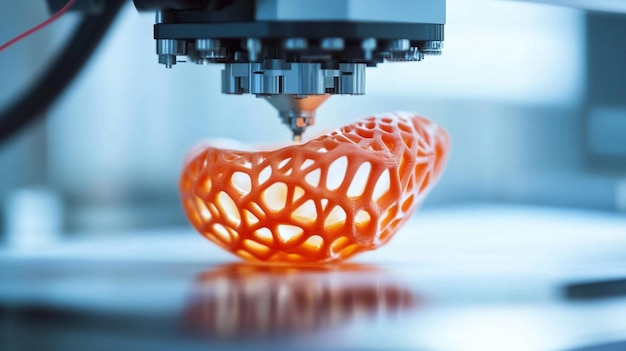In the ever-evolving world of print media, the debate between digital print vs traditional print remains a hot topic. As marketing professionals, understanding the nuances of these printing methods is crucial for making informed decisions that best meet your needs. This article delves into the specifics of both digital and traditional printing, examining their advantages, disadvantages, and applications. Whether you’re a business owner, marketer, or a curious individual, this comprehensive guide will provide valuable insights into the world of printing.

The Basics of Printing Technologies
What is Digital Printing?
Digital printing refers to the process of transferring a digital image directly onto a variety of media. It eliminates the need for a printing plate, making it a faster and more flexible option. This method is ideal for small to medium-sized print runs and can produce high-quality results with vibrant colors.
What is Traditional Printing?
Traditional printing, often referred to as offset printing, involves creating a printing plate that transfers an inked image onto paper or another substrate. This method is best suited for large print runs and offers exceptional color accuracy and consistency.
Advantages of Digital Printing
Speed and Flexibility
Digital printing offers unmatched speed and flexibility. Without the need for plates, it allows for quick setup and turnaround times. This is particularly beneficial for marketing campaigns that require rapid production and distribution.
Cost-Effective for Small Runs
For small to medium-sized print runs, digital printing is often more cost-effective than traditional methods. Since there are no setup costs associated with plates, businesses can save on expenses while still achieving high-quality results.
Personalization and Customization
One of the standout features of digital printing is its ability to personalize and customize each print. Variable data printing allows for tailored messaging, making it ideal for targeted marketing efforts.
Advantages of Traditional Printing
High-Quality Prints
Traditional printing is renowned for its ability to produce high-quality prints with exceptional detail and color accuracy. This makes it a preferred choice for projects where precision is paramount.
Cost-Effective for Large Runs
When it comes to large print runs, traditional printing becomes more cost-effective. The initial setup costs are offset by the economies of scale, making it a viable option for businesses with high-volume needs.
Wide Range of Substrates
Traditional printing supports a wide variety of substrates, including specialty papers and materials. This flexibility is ideal for projects that require unique textures and finishes.
Disadvantages of Digital Printing
Limited Color Range
While digital printing offers vibrant colors, its color range can be limited compared to traditional printing. This may be a consideration for projects that demand precise color matching.
Higher Cost for Large Runs
For large print runs, digital printing can become more expensive than traditional methods. The lack of economies of scale means that costs can add up quickly for high-volume projects.
Disadvantages of Traditional Printing
Longer Setup Times
The setup process for traditional printing is more time-consuming due to the need for plates. This can result in longer lead times, which may not be suitable for projects with tight deadlines.
Less Flexibility
Once a plate is created, changes to the design can be costly and time-consuming. This lack of flexibility can be a drawback for projects that require frequent updates or modifications.
Applications of Digital and Traditional Printing
Marketing Materials
Both digital and traditional printing have their place in producing marketing materials. Digital printing excels in creating personalized direct mail pieces, while traditional printing is ideal for high-quality brochures and catalogs.
Packaging
In the realm of packaging, traditional printing is often preferred for its ability to handle large volumes and complex designs. However, digital printing is gaining traction for short runs and prototypes.
Future Trends in Printing
Hybrid Printing Systems
The future of printing lies in hybrid systems that combine the strengths of digital and traditional methods. These systems offer the best of both worlds, providing flexibility, speed, and quality. For more insights, explore our article on hybrid printing systems.
Sustainability
As environmental concerns grow, both digital and traditional printing are evolving to become more sustainable. Innovations in ink formulations and energy-efficient technologies are paving the way for greener printing practices. Learn more about zero-waste printing processes.
Integration of AI
Artificial intelligence is playing an increasingly important role in the printing industry, optimizing workflows and enhancing print quality. Discover the impact of AI in our article on AI in printing technology.
Conclusion
In the debate of digital print vs traditional print, there is no one-size-fits-all answer. The choice ultimately depends on your specific needs, budget, and project requirements. By understanding the strengths and limitations of each method, you can make an informed decision that aligns with your goals.

Frequently Asked Questions
What is the main difference between digital and traditional printing?
The main difference lies in the process: digital printing transfers digital images directly onto media, while traditional printing uses plates to transfer ink onto substrates.
Which method is more cost-effective?
Digital printing is generally more cost-effective for small to medium runs, while traditional printing becomes more economical for large volumes.
Can digital printing match the color quality of traditional printing?
While digital printing offers vibrant colors, its color range may be limited compared to traditional printing, which offers superior color accuracy and consistency.
For a deeper dive into the future of printing, consider reading this external article on the future of commercial printing.
This article contains affiliate links. We may earn a commission at no extra cost to you.






